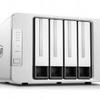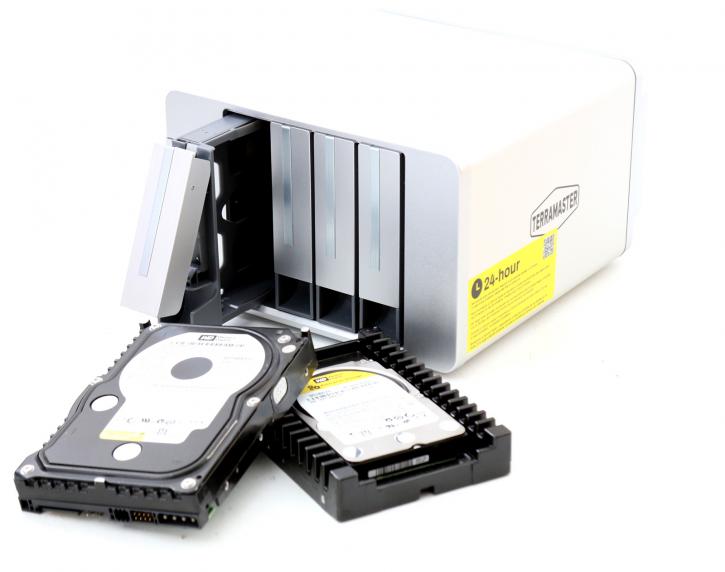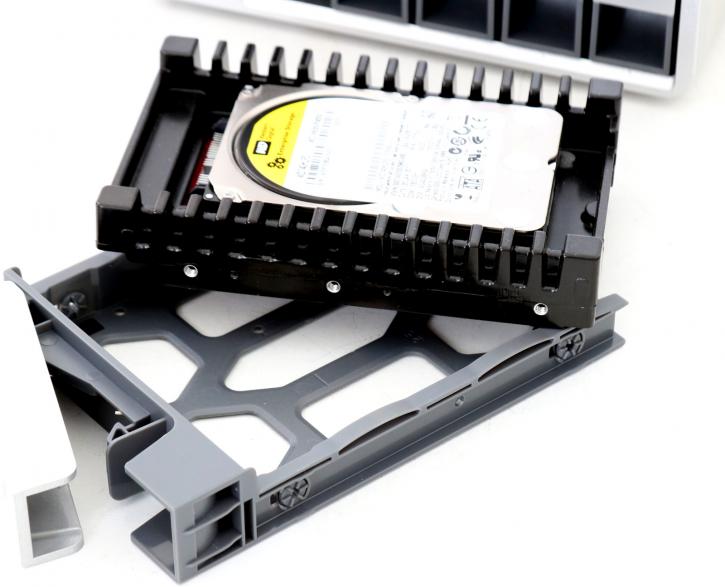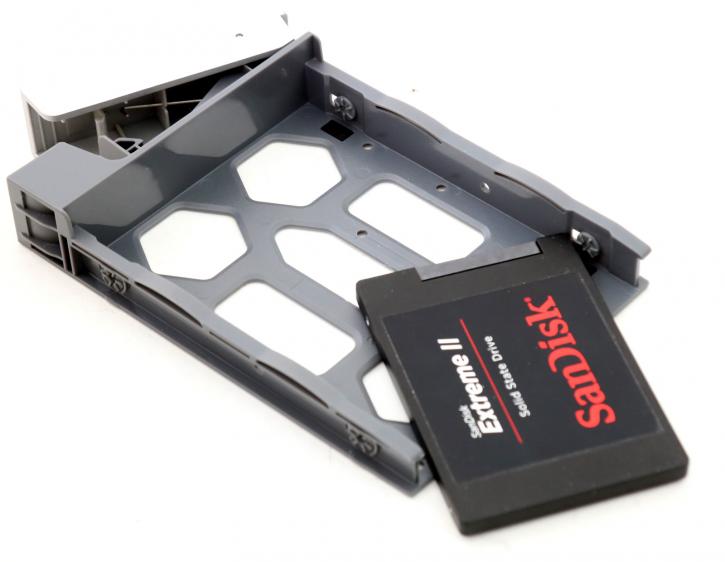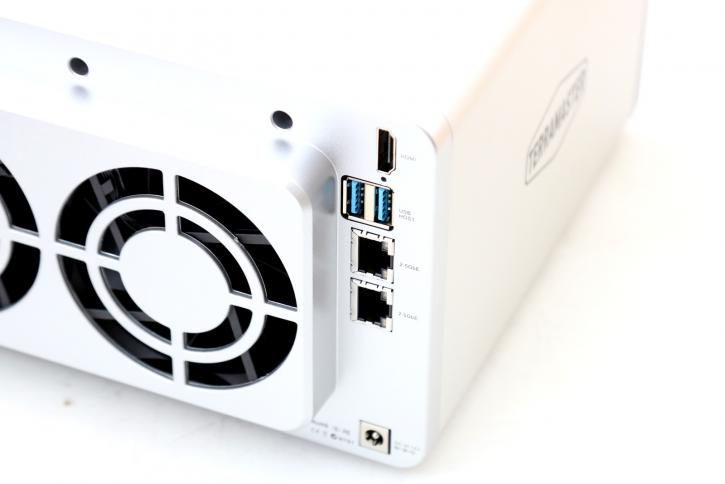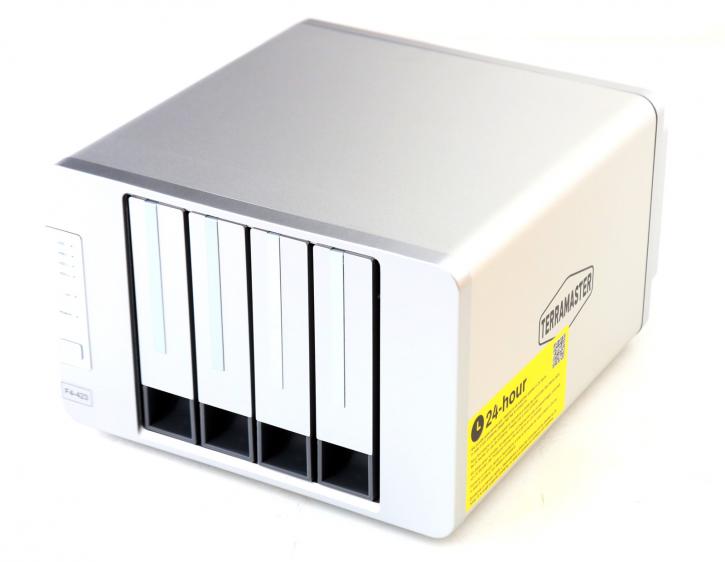Product Gallery
Product Gallery
If you want to define the F4-423 as anything other than a silver box made of plastic and metal, you'd be stretching the constraints of its basic design even further. Because the company's designs are centered on durable construction and practical use.
Each drive bay can handle a 3.5-inch or 2.5-inch hard disk or solid-state drive with capacities of up to 20 TB, for a total raw capacity of up to 80TB when using all drives in parallel. The drive trays are not tool-less, and mounting screws will be required to secure the hard disk drive to the drive tray. When they're finished mounting, they simply slide into the NAS and lock into place. There are LEDs on the front left-hand side of the NAS. Two of them indicate power and LAN connectivity, respectively, with the remaining correspondings to the drives you can install. After removing the casing, you'll bump into two M2 slots, we'll show you that on the next pages.
When the device is powered on, any installed hard drives or solid-state drives (HDDs/SSDs) will initially appear as solid red, then flash green (as they are initialized), and then turn solid green, indicating that the drives are ready for usage. It took around 30 seconds from the time I pressed the power button till the 'HDD 1-5' lights turned solid green.
The rear IO and dual 80 mm fan vents may be seen when the machine is turned around. Thermal sensors control the speed of these fans, and when running at full speed, they can move a significant amount of air through the enclosure. That fan sounds somewhat audible, though.
Because the cooling for five drives and a passively cooled Celeron is more than adequate, the only way this might go wrong is if the fans fail or the temperature sensor reads wrongly, or if the surrounding air becomes too heated near the NAS unit. The back IO is limited, and you can see the LAN ports. There are also slots for power, two USB 3.0 ports, and an HDMI port. the latter one serves as status only.
When you turn the device upside down, you'll discover four rubber feet that aid in making it more noiseless (applicable to HDDs, not SSDs).
